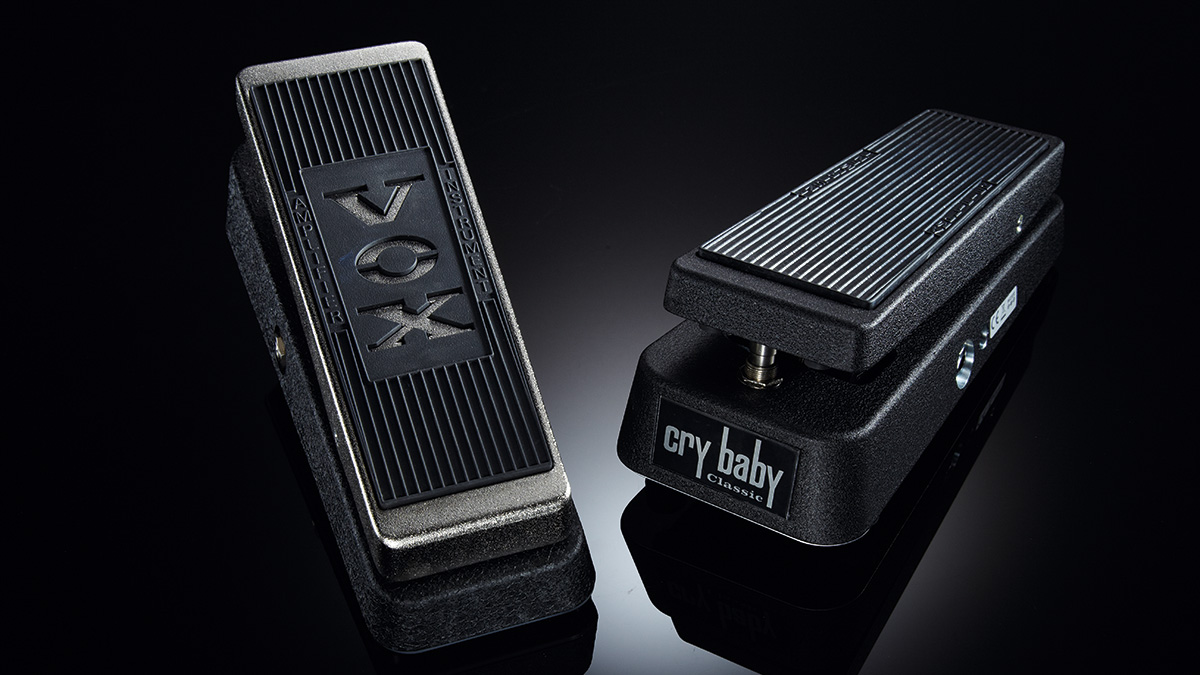
In late October 1965, Vox designer Dick Denney visited the Thomas Organ Company, who distributed Vox in the US, to advise on the design of a new line of US manufactured solid-state amplifiers. One of these amps was the 100-watt Vox Super Beatle, which featured a resonant boost.
In a company summary of their work with Denny, it was proposed that a top-panel selector switch could be used to toggle between “the normal maximum treble boost action and the selected resonant boost characteristic”.
It was also observed that “an interesting wah-wah effect is obtained by operating the boost switch between its two positions. A remote control for this at the guitar would be novel, however, the cost and complication would probably be high.”
Thomas Organ Company engineer Brad Plunkett did some further design work, replacing the frequency selector switch with a potentiometer and using an Armstrong oscillator circuit that was suggested by his colleague Les Kushner. Plunkett tried it out with a guitar-playing friend called John Glenum and, although they loved the effect, they quickly realised hand operation would be impractical.
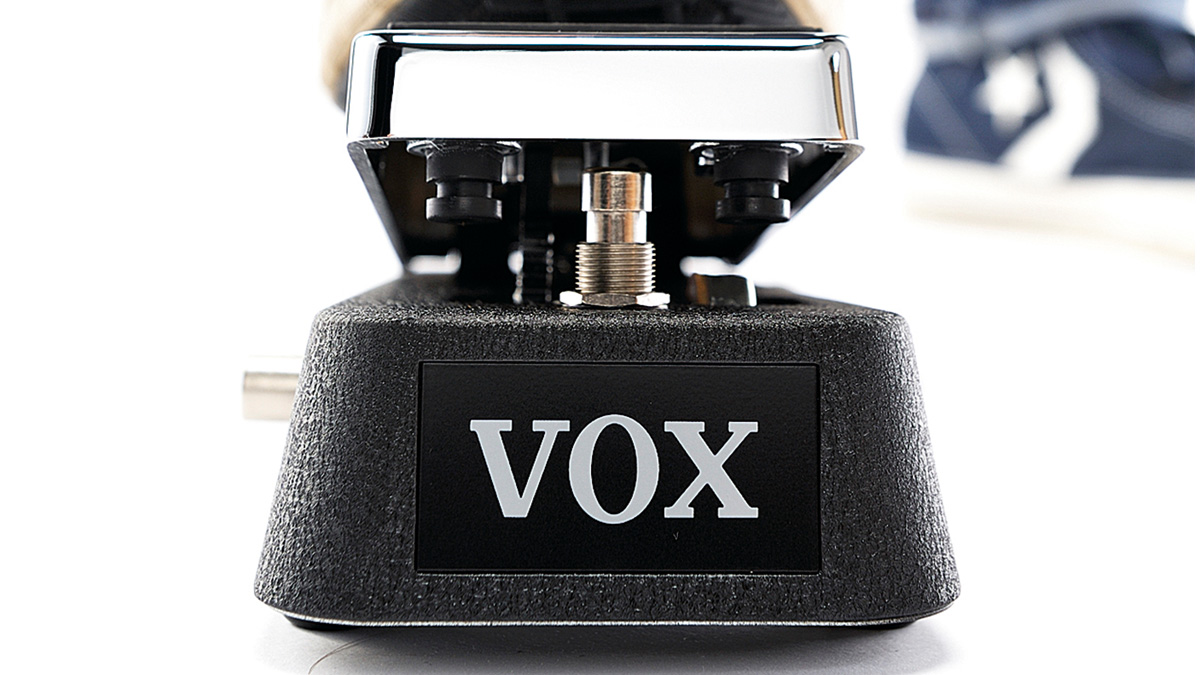
And here’s where accounts differ – because both Plunkett and Vox endorser and session guitarist Del Casher claim to have thought of using a Vox organ volume pedal instead of a hand-operated control knob. Casher recalled Thomas Organ president Joe Benaron coming by for a listen and declaring this pedal-operated wah effect unsuitable for electric guitar.
However, he was convinced that it could be successfully marketed to electric trumpet players. To be fair, Stan Cutler’s original resonant boost circuit had been designed to simulate the Harmon mute trumpet sound made popular by Clyde McCoy.

Clyde McCoy was duly paid $500 to endorse a pedal he probably never used. The first wahs appeared in August 1967 and featured a picture of McCoy on the baseplate.
Later versions only carried a facsimile of McCoy’s signature, but both versions are now highly sought after. It’s a reasonable assumption that the overwhelming majority of those who are seeking them out are guitarists, rather than trumpet players.
Stan Cutler’s original resonant boost circuit had been designed to simulate the Harmon mute trumpet sound [of] Clyde McCoy
With the likes of Eric Clapton and Jimi Hendrix picking up on the wah-wah, it didn’t take long for Vox to switch its marketing efforts towards guitar players and the pedal was renamed the Vox V846. For a glorious flavour of the era, search out the Vox Wah-Wah commercial featuring The Electric Prunes.
Between early 1967 and early 1968, Vox manufactured wahs with a grey enclosure in the UK; the first Cry Baby wahs starting appearing in 1967. Thomas Organ and Vox wahs were briefly manufactured in Italy by Electtronica Musicale Europea (EME) before Jen Elettronica began Cry Baby production in 1969. Brad Plunkett and Les Kushner filed a patent application on 24 February 1967 and the patent, number 3,530,224, was granted on 22 September 1970.
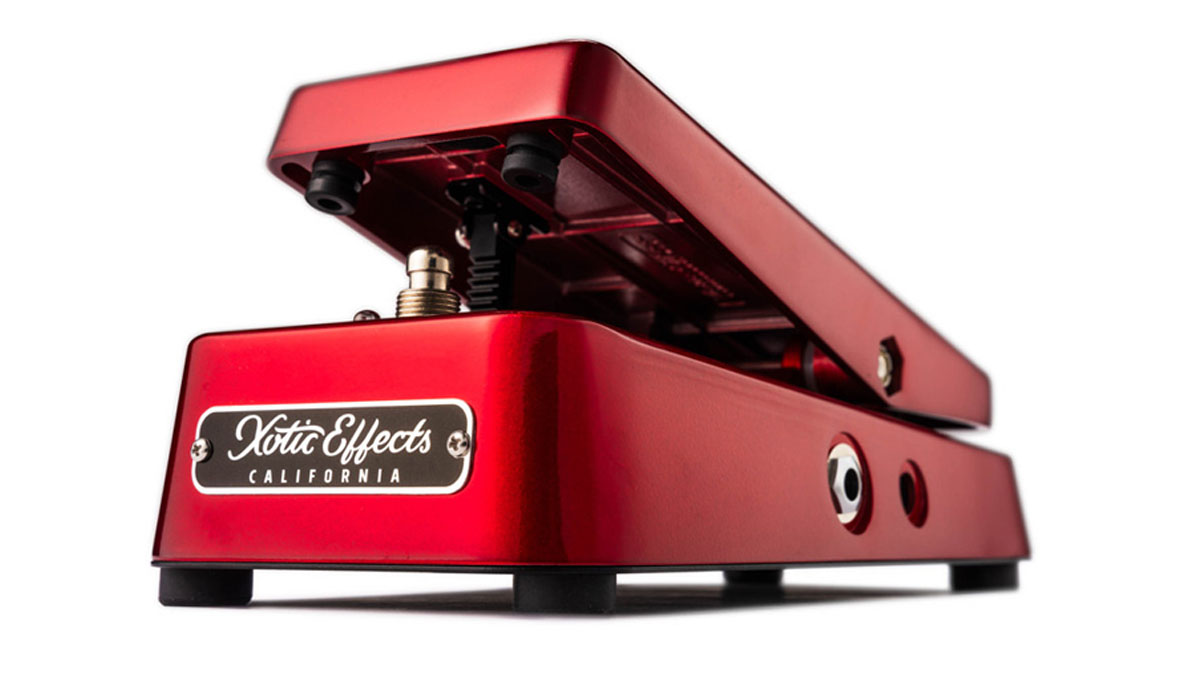
How it works
In essence, a wah pedal is a bandpass filter, which simultaneously rolls off the upper and lower frequency ranges and restricts the audio flowing through the pedal to a narrower band of midrange frequencies.
There is a boost (resonance peak) at the point where the upper frequencies start to roll off. This can also be called the low-pass filter frequency point. When the pedal is operated it moves the resonance peak frequency up and down.
Recording studio equalisers, such as the Pultec EQP-1A, allowed engineers to choose specific frequencies for boosting or cutting. This was achieved by combining carefully selected inductor and capacitor values in various switch positions.
The premise behind the wah pedal was that it should be controlled by a variable resistor, rather than a switch. Like a simplified studio equaliser, the wah circuit contains an inductor and an accompanying 4.7µF capacitor, but both are fixed in value. The innovative feature of the wah circuit is that the pedal alters the current flowing through the 4.7µF capacitor, which makes it appear like a variable capacitor.
The intensity of the wah is partly determined by the ‘Q’ – which is the range of frequencies around the peak – and a narrower ‘Q’ accentuates the effect. In wah pedals the ‘Q’ is preset by a 33k resistor, but it can be altered to achieve different tones.
For a more detailed analysis of the wah circuit, check out RG Keen’s The Technology of Wah Pedals. It has been the go-to online reference for wah builders and modders since it was published in 1999.
Super inductor
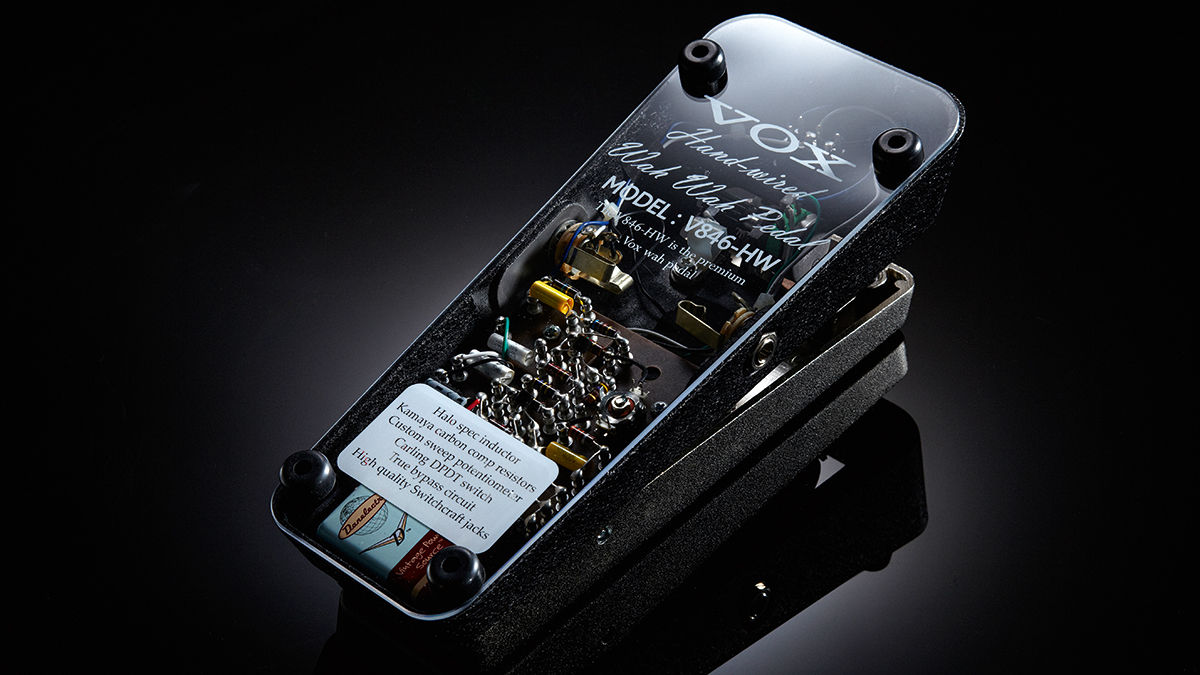
In the wah world, there are plenty of opinions about what constitutes the best set of features. Transistor types, tropical fish capacitors and potentiometer tapers are hotly debated – but most attention is paid to the various inductor types. Some have achieved mythical status and a non-original inductor in a vintage wah will seriously dent its value.
The inductor that featured in the Clyde models and the earliest V846s is known as the ‘halo’, so called because of a round metal cover with a circular cutout in the centre. A halo inductor in a metal case was used in the EME-made Italian wahs and is known as the ‘trash can’ or ‘film canister’.
When supposedly deactivated, vintage-style wahs load the guitar signal down and drain off treble frequencies
When Jen Elettronica took over production, they were fitted with Fasel inductors in various colours. Like the later ‘stack of dimes’ inductor, all three are highly regarded, but the cube-shaped TDK inductor has fewer fans.
The inductor value is nominally 500mH, so in theory they should all sound the same in circuit. In practice, all these inductors were fairly cheap components and only remain sonically neutral up to a point. In a wah circuit they are pushed beyond that point and they saturate or distort in different ways and produce various harmonic overtones.
Hey sucker
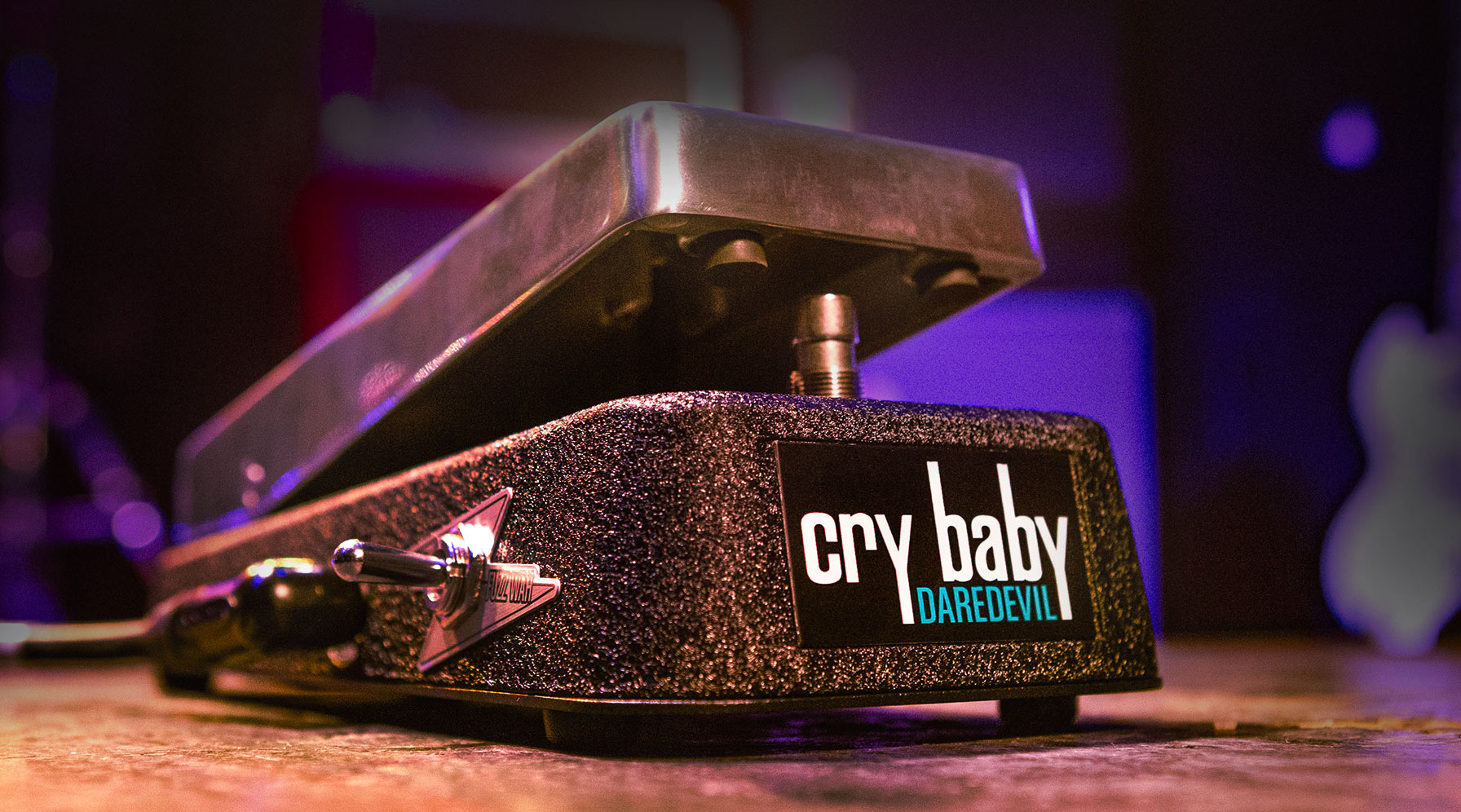
The term ‘tone sucker’ is common in the stompbox world and it’s often applied to pedals that make your tone worse, even when they’re switched off. Vintage-style wahs are a case in point because when they’re supposedly deactivated, they load the guitar signal down and drain off treble frequencies.
To get around this, the on/off switch can be converted to true bypass. DPDT or 3PDT switches may be used, with the latter opening up the possibility for an LED status light, but you may experience an annoying thump whenever the pedal is activated. True bypassing a wah may reveal a slight drop in level when the pedal is activated, but you can compensate by swapping the 68k input resistor for a smaller value, such as 47k.
Hitting the buffer
Later fuzzes often feature a buffered bypass circuit that prevents the thumping, although vintage purists often choose to bypass the buffer. Just because something isn’t vintage correct doesn’t mean it isn’t potentially beneficial, and while a buffered input may offend some, a buffered output can help wahs to ‘play nice’ with Fuzz Face‑type pedals.
Fuzz first or wah first? That is the perennial question and the correct answer is yes. Both work, but both can present problems. With wah first in line, an impedance mismatch between the pedals can create a resonant circuit that results in a screeching oscillation. The cure is to place a buffer or a buffered pedal between the wah and fuzz, or even build an output buffer into the wah.
The downside is that the fuzz won’t respond to volume control changes in the classic way. Putting fuzz before the wah allows the fuzz to respond to volume adjustments and presents fewer problems. It’s what Hendrix supposedly did – and many would argue it sounds better.
Popular modifications
Since the inductor type plays such a crucial role, swapping one type of inductor for another can be very effective and it’s a simple soldering job. Various companies offer halo replicas and you can choose between the more common red Fasel or the cleaner and funkier-sounding yellow Fasel.
Although 470k, 500k and 1 meg-ohm potentiometers have been reported in some of the earliest Vox wahs, 100k is by far the most common value. Hendrix’s pedal tweaker Roger Mayer would substitute potentiometers of different values and used both linear and logarithmic tapers depending on the tone or response that was needed.
He also told this writer that much depended on Hendrix’s footwear, with high heels resulting in treble emphasis and flat-soled sneakers giving a flatter response.
The taper is the most important thing because it affects the feel and character of the wah. Numerous companies offer replacements and some claim to be upgrades. You may be forced down this avenue if you’re a heavy wah user because the potentiometers do wear out. Some have even tried an LED and a light sensitive resistor, with the pot controlling the LED for noise-free operation.
Vintage-style wah units pre-dated pedalboards and pedalboard power supplies, so they were powered by battery only. This can be inconvenient if you want to leave your wah permanently installed and plugged in on your ’board. If you’re happy to drill a hole in the side of the casing, however, it’s easy to retrofit a DC socket. But if you’d prefer to avoid modding a vintage example, you could use a battery clip converter to connect a power supply to the internal battery connectors.
Components can be swapped to change the ‘Q’ range, increase or decrease bass response, sweeten the treble, alter the peak amplitude or even shift the operating range of the pedal.
Some boutique wahs have internal and external switches or controls to make these parameters adjustable. If this sounds appealing, consider a drop-in replacement circuit board. Many come with dip switches and trim pots that allow you to customise your pedal.







